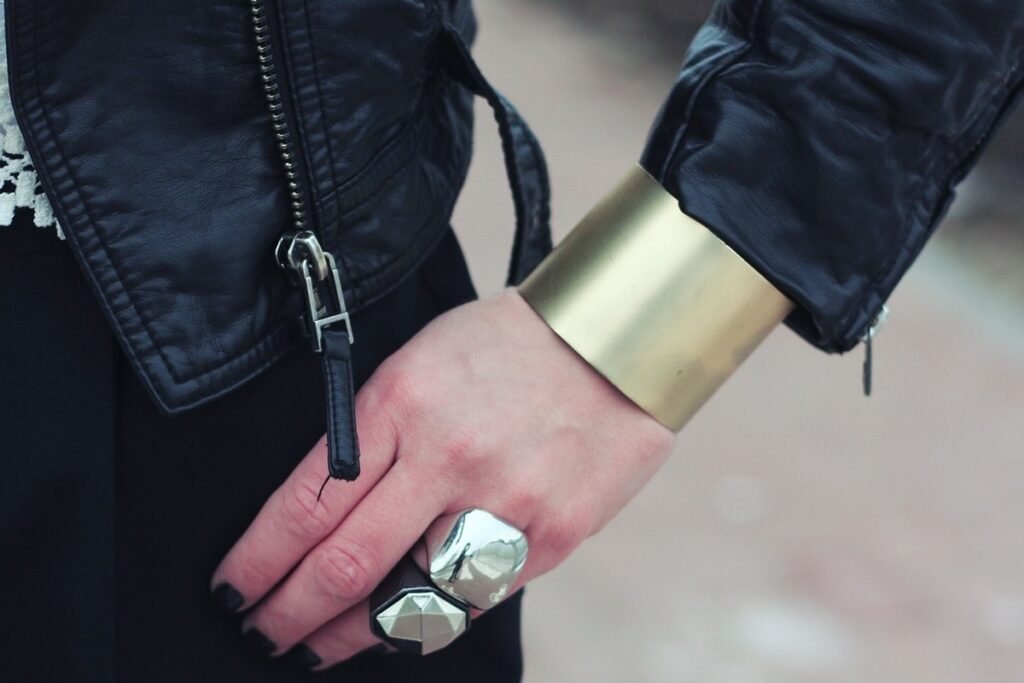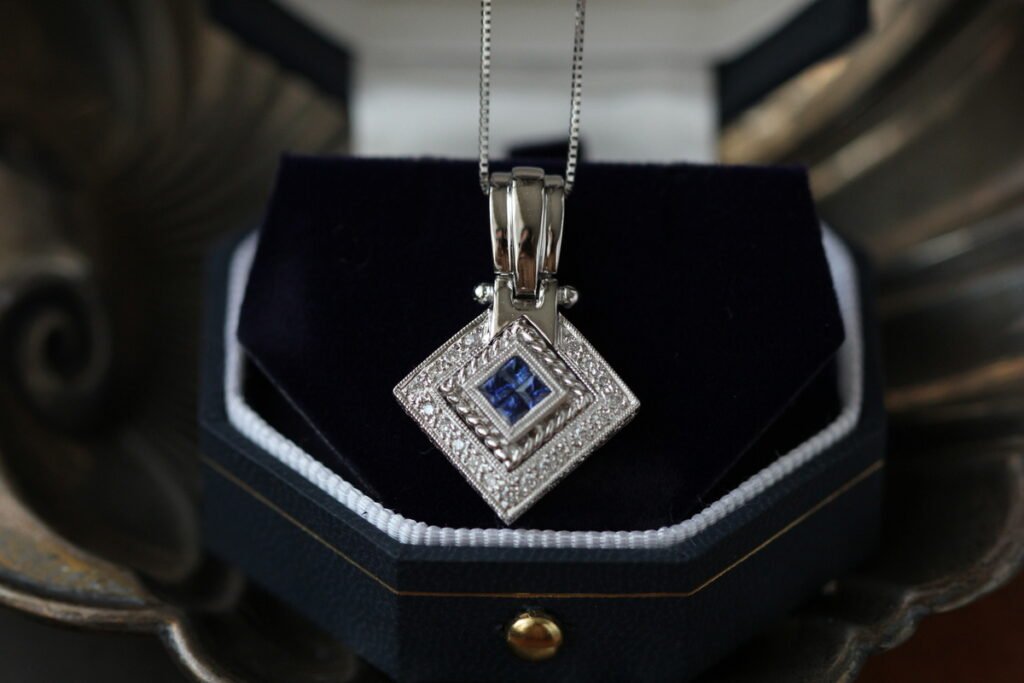For most people, the appeal of jewelry is the traditional design and process of creation. However, just as different industries adopt new technology as fast as they are discovered, the same goes for the jewelry industry. Nowadays, there are several types of jewelry making technology that makes the process easier and more precise.
How Technology is Transforming the Jewelry Industry
New concepts and procedures should be seen as progress for the industry. And here are just a few things that are bound to transform the jewelry making process for the better.
New Techniques To Make Stunning Jewelry
The traditional jewelry making process is far from dead. If anything, custom-made and hand-made procedures are still valued for the craftsmanship that they entail. Some may think that the use of technology in jewellery industry means that the personalizing aspect is gone.
What this really means is an enhancement of jewelry making precision. At the same time, it takes the cap off of the limits to design. The possibilities for designing your personalized jewelry becomes even more diverse with the entry of new jewellery technology.
Computer aided design

Intricate pieces may appear as if take a lot of time and effort to create. While this is true at the design stage, it does not need to drag on into the creation stage.
These days, most jewelry designers often use CAD software design. Besides ease of use, it allows the designers to become more flexible with the designs they create. Additionally, because designs can be saved, the jewelry maker no longer needs to worry about recreating new molds with dissimilar proportions due to human error. This also takes away one step for designers in the entire process.
3D printers
Another advantage of using technology for jewelry is that users can easily print out models of designs. Jewelry makers can create models using the software, which can then be saved for another batch of production.
In cases of personalized designs for bulk production, creators can easily make changes to the models on a computer. Once this is done, the new variant can then be printed out using 3D printers. Note that they usually make use of resin material to create molds for multiple productions. But the beauty of this is that there’s no need to cast an entirely new but only slightly similar mold for a different design.
More than being advantageous to the creator, buyers can also benefit from 3D printing. Since 3D printing can easily make use of various materials, the buyer now has more options as to how their jewelry pieces will look like without having to break their budgets.
Laser sintering
Lasers are technically the older new technology use in jewelry making. Yet even this method of making jewelry is constantly evolving. Some of the technology involved in lasers has been around for a few years. These include cutting and welding, which are different aspects of the same procedure.
Previously, lasers have become the answer to precision designing. Cutting metals as close to the design as possible has made it a very viable style. Laser technology has advanced further, this time adding the unique capability of having hinges and pins made into the design. According to GIA, this technology still needs a lot of fine-tuning, hence the rather expensive procedure.
Yet for its metal melting process, it can revolutionize the procedure by doing away with castings. This fast-tracks the process from design to actual output in a matter of clicks and arrangements.
Apart from style, lasers add another layer of benefit to the jewelry owner. Nowadays, jewelry makers included the added benefit of security in jewelry.
Engraving a diamond ring does not stop with initials or a special phrase. Your diamond ring can now have microscopically carved identification numbers to ensure that you know which diamond is yours. In case of any theft, the diamond ring can easily be traced back to its rightful owner.
Flame-fusion method
This method may be considered as an “oldie but goodie” approach to jewelry making. The flame-fusion method or the Verneuil process first came about at the start of the 20th century. It was the process for simulating red rubies into synthetic gemstones.
Considering the price range of many jewelry pieces, processes like these can become a go-to solution for those who would want to have a specific color and look for their gemstones. While there is the trade-off of not being an authentically mined gemstone, jewelry enthusiasts sometimes prefer a particular shade, size, or shape.

It’s important to note that while they are not as rare as authentic gems, the overall procedure still entails a lot of effort and resources to accomplish.
Electroforming
Precious metals will always be a staple in jewelry creation. But this does not mean that the process cannot evolve to create even better designs. A recent development in this field allows artisans to create more lightweight yet strong metal designs for jewelry.
Electroforming coats pieces with a layer of gold or silver so that they can produce strong but lightweight pieces. This is just one type of electroforming, which makes use of the electrolyte path and various alloys to create the durable layer. Another procedure involves the use of platinum to create the same layer but using this particular metal for a stronger and more durable output for everyday wear.
Changing The Landscape Of Making Jewelry
Beyond the new techniques that technology creates, the jewelry industry as a whole also experienced an overhaul. This comes in the form of new practices, from searching for the right jewelry to having access to more options worldwide.
Making the industry more accessible
Globalization has also been shaping the jewelry industry in as far as accessibility is concerned. Before, most jewelry pieces come as souvenirs from a visit to a particular country. Some countries even make a name for themselves in this industry. They become hot spots for jewelry pieces that are sold as souvenirs to tourists.
However, new technology in the jewellery industry has made it easier to get designs from all over the world. If there is a designer from halfway across the world, jewelry enthusiasts can easily find a way to connect with the designer, have their designs made, and have the item shipped to them at a reasonable time.
The beauty of this is that it expands the connections not only for the buyers but also for the designers. Even smaller local designers can get a global audience, thanks to technology.
AI grading for diamonds
For most people, even some jewelry enthusiasts, knowing the difference between VS1 and VS2 can be hard to do. Gradings for diamonds can become challenging, especially to the untrained eye.
But even individuals with the proper training can be exposed to potential errors. Hence, more manufacturers now take advantage of available technologies to help with grading diamonds.
This avoids significant differences in grading, depending on which lab a specific diamond or precious stone comes from. If anything, using this technology builds customer confidence in the jewelry maker of their choice. This may be one of the instances where standardization may go a long way.
Encourage more spending and buying
When the industry becomes more accessible and standardized, it becomes easier to encourage spending among jewelry enthusiasts. The jewelry market continues to see growth by as much as 10%, especially in the online department. And a big part of this is the different technologies that have allowed the industry to transform accordingly.
Tracking beyond the physical store
Not all helpful jewelry making technology needs to be focused solely on the creation part of the process. In this case, tracking tools, be it online or in-store can help the industry.
Customer data has remained invaluable to any industry. Many companies now use analytics and tracking tools, especially in the digital age. Even for online shopping, manufacturers opt to use keyword search, as this guides them during the planning for products.
At the end of the day, technology also helps in marketing products. As great as jewelry makers works are, it won’t benefit them if they are not able to reach the customers to sell the product.
Benefits óf Becoming a Certified Jewelry Maker
Jewelry makers who truly pursue progress in their fields never forget the importance of a jewelry making certificate. The different tools and techniques often come with proper standards and procedures that only certified jewelers can truly access.

Are you still on the fence about the kind of jeweler to choose for your next purchase? Explore one who has made certifications part of the company’s growth.
Understanding the basics of jewelry
Jewelers with the proper certifications know the ins and out of the business. Just because more advanced technology makes the craft easier does not mean this will be the only way to create jewelry.
A lot of new technology stems from old craft. It’s good to treat them more as enhancements of the processes, rather than a replacement altogether. When looking for a jeweler, opt for one that has experience in both the traditional way of crafting jewelry and the use of new technology.
This suggests that they have a deep understanding of how to make the jewelry that they sell. Additionally, you can also have the option of having traditionally-made jewelry or technology-assisted. All these while dealing with just one jeweler is an immense convenience.
This is because it’s good to have a trusted jeweler for most of your fine jewelry or even fashion needs. The more experience you have working with that jeweler, the less likely you will feel anxious, especially with the result of custom designs.
Learning the latest technology for the craft
Certified jewelers also assure you that they know the latest technology that can balance output with price tags. One already needs to worry about a myriad of factors when choosing a jewelry piece.
Jewelers who are well-versed in the latest technology can help with major decision-making factors. For instance, if you have a limited budget but already have specifics in mind, they can suggest the best compromise to continue with your order.
Some jewelers can work with the materials and source metals and gemstones they have. They will most likely know the best approach to get the results that will resonate with your needs most closely.

Wearable Jewelry: The Future Of Fine Jewelry?
For the jewelry enthusiasts with more modern sensibilities, jewelry is no longer confined to being decorative ornaments. Some customers have started to look for more functionality in the pieces that they wear.
This has brought about another innovation in jewellery industry—wearable jewelry. In the age of smartphones and multipurpose gadgets, even jewelry can serve more than one purpose.
Just as some accessories like watches and bracelets have become multifunctional, smaller accessories can also be programmed into trackers. Future-thinking jewelry makers have started experimenting on wearable tech that make use of jewelry pieces.
Function and form in one fine jewelry
Imagine tracking your steps or heart rate using rings and smart bracelets. These can be conveniently connected to smartphones that can collect data during your next run or while you are at the gym. What’s even better is the fact that it transforms the landscape of wearable health tech.
Used to be, wearable smart devices had a very rugged form. It’s understandable, given how they are often used in gyms and other facilities that are predominantly linked to the fitness department.
However, if the shift now turns to a more fashion-inclined approach for everyday wear, then this can take the process in another direction. Health enthusiasts can now make it a lifestyle even outside of their health routines.
From casual to couture, to your smart device
Currently, there are already a number of wearable jewelry pieces making the rounds in the market. There are cuffs that notify others if you are in an emergency. Some manufacturers can create pendants to monitor proper sleep. Other makers have enhanced the current design of health wristbands for formal or nightout wear.

What makes these new technologies even more fantastic is the flexibility of the jewelry design due to newer procedures for jewelry making. When all of these new technologies combine, one can expect bigger and grander things in the jewelry landscape.
If you want to learn more about the history of jewelry, check out our article “A History of Jewelry: Everything You Need To Know From Design to Meaning.”

